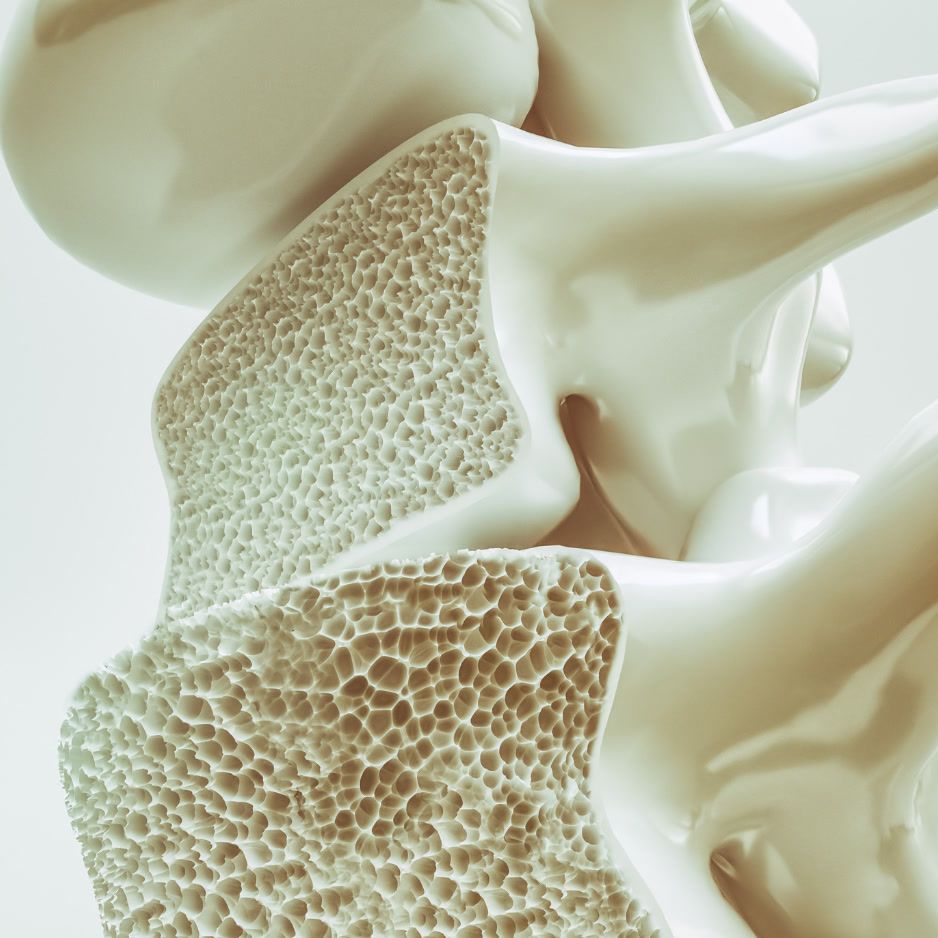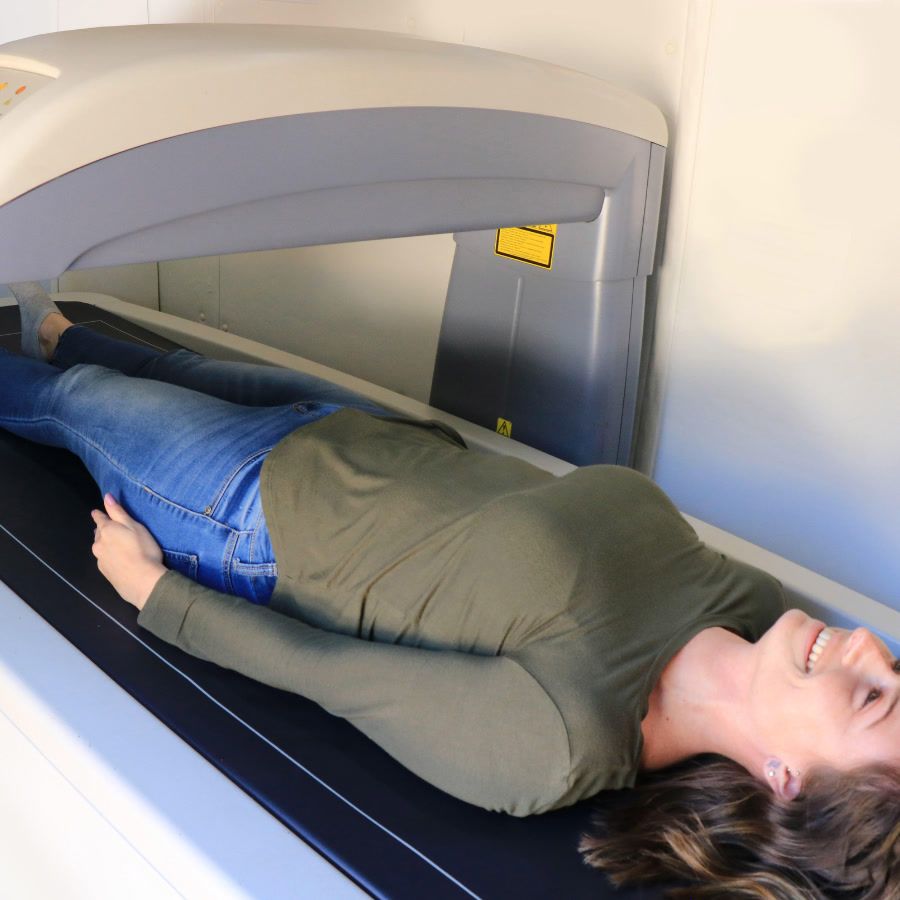Red Light Therapy Before and After: Results Explained
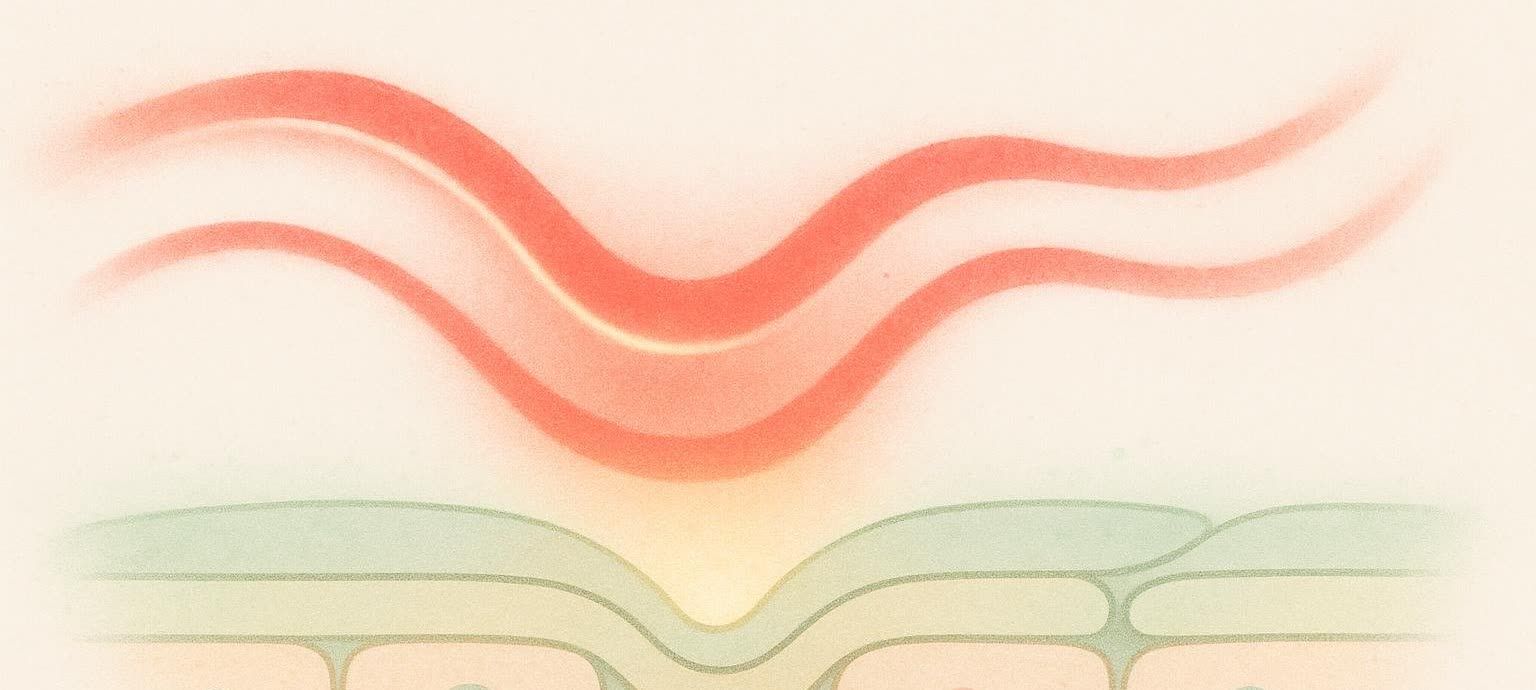
Red Light Therapy Before and After: Full-Body Results
Last updated: 05/20/2025
Quick take: You’ve seen the dramatic “before and after” photos—now let’s make them yours. Below, you’ll learn the science that powers those transformations, realistic timelines for visible change, and step-by-step tips for photographing your own progress. When you understand why red light works and how to document it, you can recreate—and even surpass—the results splashed across social feeds.
Table of Contents
- Why “Before & After” Proof Matters
- Red Light Therapy 101
- Red Light Therapy Before and After: Milestones to Expect
- Protocol Playbooks
- How to Capture Great Progress Photos
- Evidence Check – What the Research Says
- Safety & Side-Effects
- Home Device vs. In-Studio Panel
- FAQ
- Track Results Beyond Photos
Why “Before & After” Proof Matters
Red light therapy’s benefits accumulate slowly—think weeks, not hours. Documenting progress lets you:
- Spot subtle yet meaningful changes (e.g., fading hyper-pigmentation).
- Adjust wavelength, distance, or session length sooner if you plateau.
- Stay motivated when the mirror lies on low-energy days.
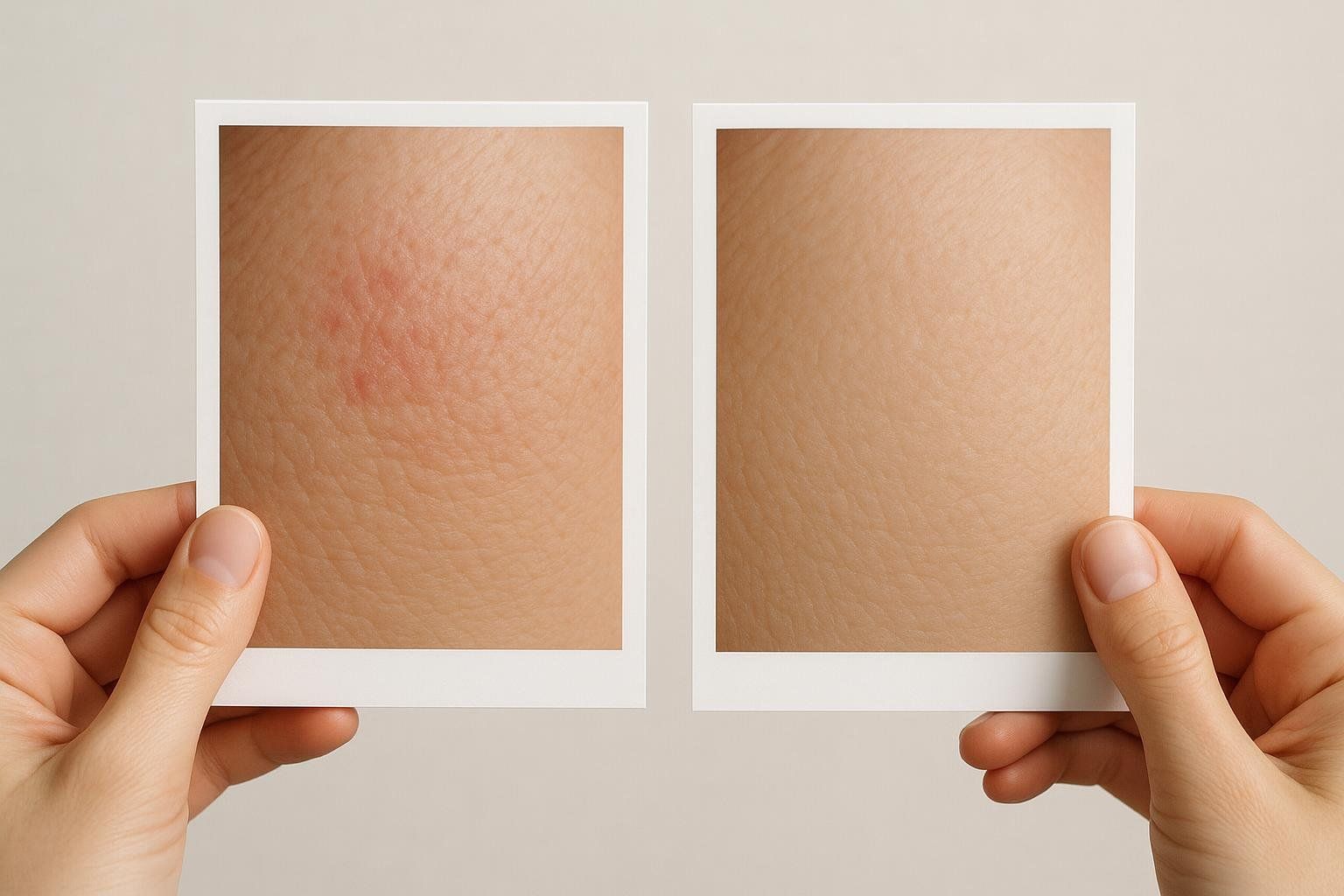
Pro-tip: Combine images with objective markers such as pain-scale logs, sleep-tracker data, or a periodic BodySpec DEXA scan to verify lean-mass or inflammation shifts.
Red Light Therapy 101
| Parameter | Sweet Spot* |
|---|---|
| Wavelength | 630–670 nm (red) & 810–850 nm (near-infrared) |
| Power Density | 20–60 mW/cm² at skin surface |
| Typical Session | 10–20 min per treatment zone |
| Core Mechanism | Stimulates cellular ATP → repair & anti-inflammation |
*Ranges compiled from photobiomodulation parameter reviews (Zein 2018; Felician 2023).
Red light photons are soaked up by your cells’ “power plants” (mitochondria). That surge in ATP—the cell’s energy currency—kicks off faster tissue repair, better circulation, and lower inflammatory signals (Couturaud 2023).
Red Light Therapy Before and After: Milestones to Expect
- Week 0 (Baseline): Capture neutral-lighting photos of the target area and record any pain scores or skin-care product use.
- Week 2: Mild improvements in circulation—skin may look rosier post-session; some users feel the first hints of reduced joint stiffness.
- Week 4: Early collagen remodeling becomes visible as finer lines soften; a 2019 meta-analysis reported a ≈ 1.4-point drop on a 10-point VAS pain scale for knee osteoarthritis after ≤ 4 weeks of red-light treatments (Stausholm 2019).
- Week 8: Acne-scar discoloration and textural irregularities may fade noticeably; mobility metrics such as knee flexion can improve.
- Week 12+: Wrinkle depth can decrease by double-digit percentages in some studies; benefits plateau, so many users shift to maintenance 1–2 × per week.
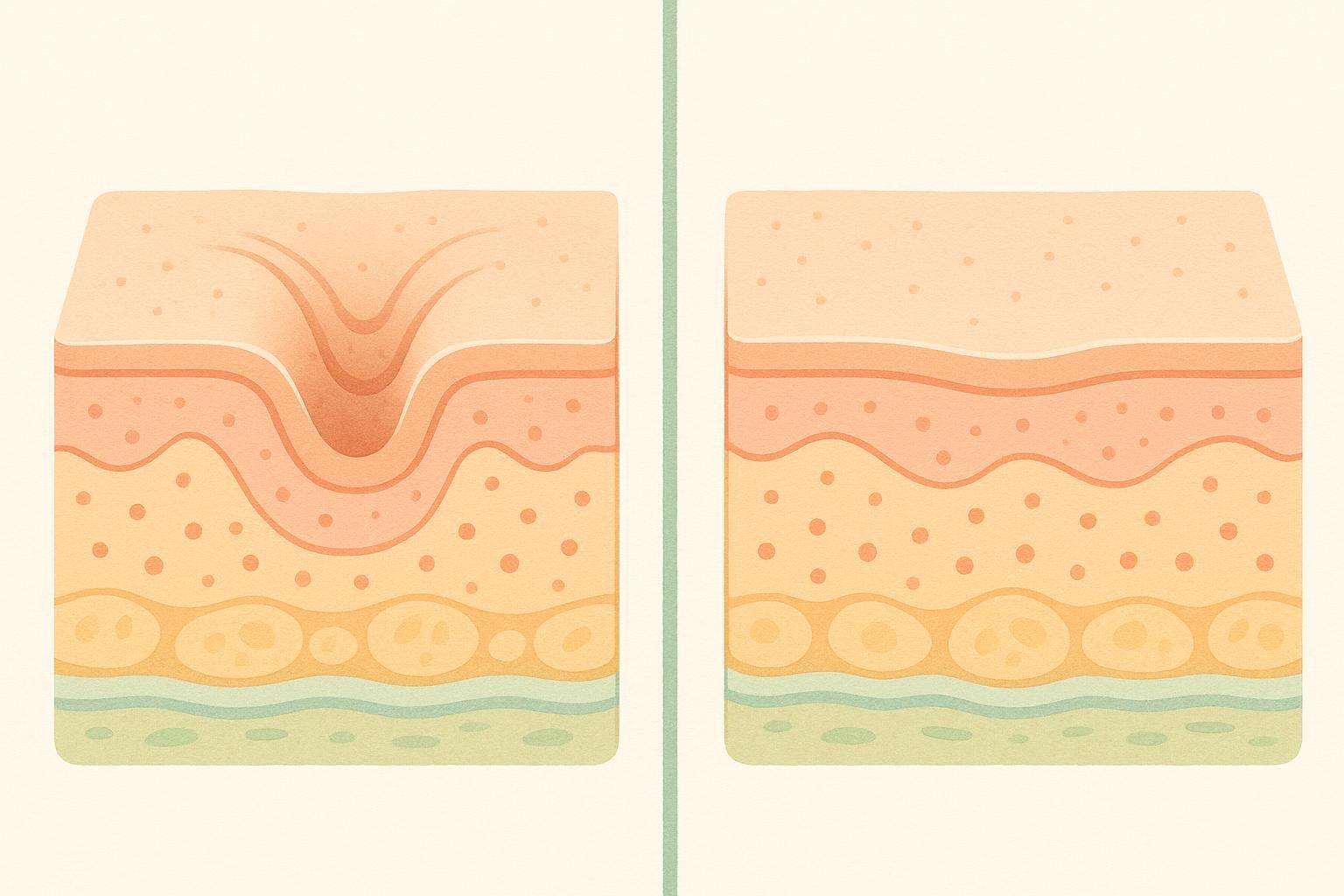
Protocol Playbooks
The best routine hinges on concern, skin type, and device power. Use these templates—grounded in published dermatology research—as starting points, then tweak based on individual response.

Eight-Week Acne-Scar Protocol (Sensitive-Skin Friendly)
| Week | Sessions / Week | Duration | Distance | Notes |
|---|---|---|---|---|
| 1–2 | 3 | 8 min / cheek | 12 in (30 cm) | Start low to avoid redness |
| 3–4 | 4 | 10 min | 10 in | Add gentle post-wash cooling mask |
| 5–6 | 4–5 | 12 min | 8 in | Apply collagen serum immediately after |
| 7–8 | 5 | 12 min | 8 in | Compare with baseline photos |
Four-Week Joint-Pain Protocol (Knee Example)
| Week | Sessions / Week | Duration | Joint Angle | Extras |
|---|---|---|---|---|
| 1 | 5 | 15 min | Slight flexion | Log pain (0–10) daily |
| 2 | 5 | 15 min | Alternate flex / extension | Add light quad stretch |
| 3 | 5 | 20 min | Flexion | Contrast shower post-session |
| 4 | 5 | 20 min | Flexion | Re-test mobility & pain |
Clinical reviews echo the meta-analysis above, noting roughly a 1-point VAS pain reduction by week 4 when red-light therapy is paired with basic exercise (Stausholm 2019).
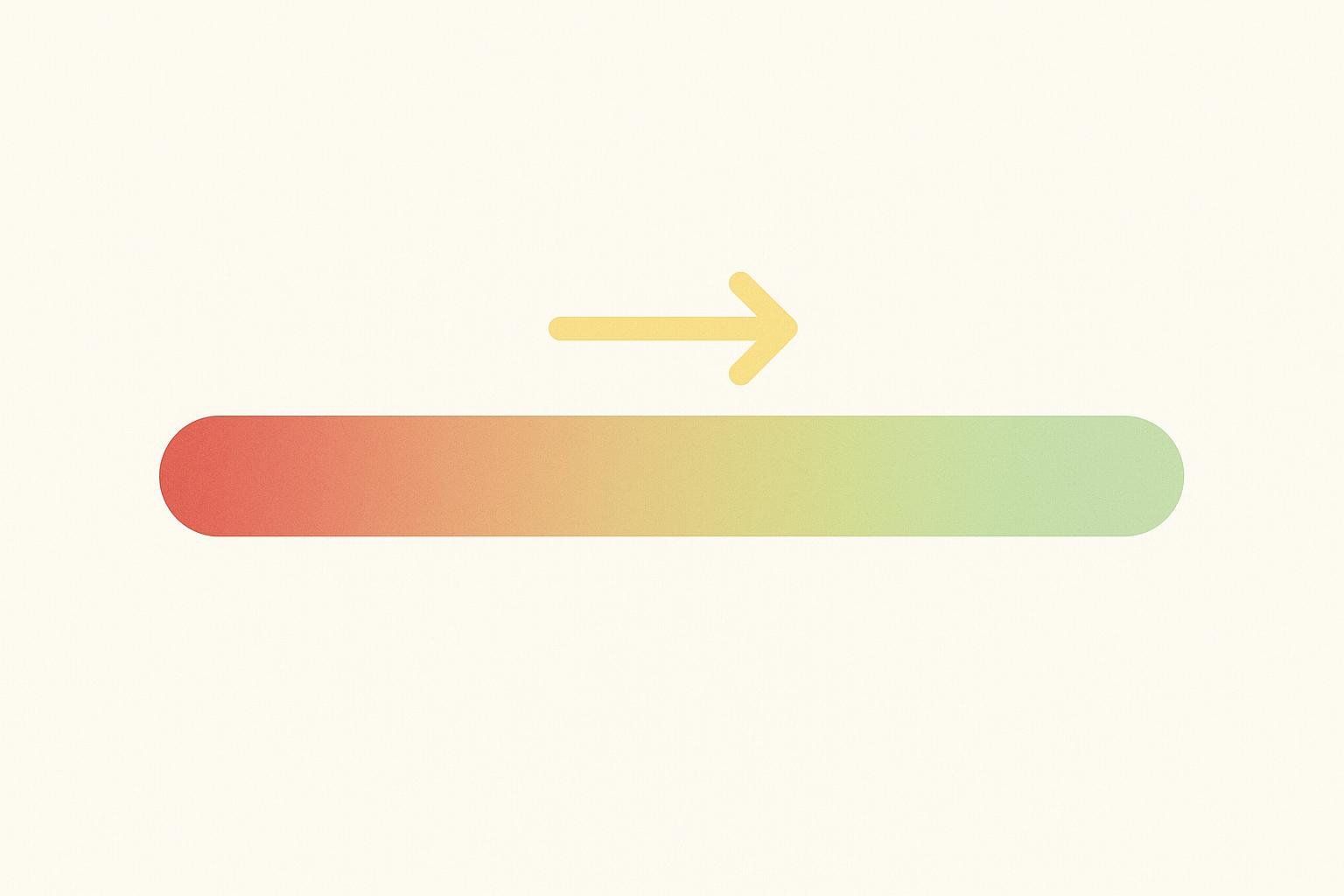
Twelve-Week Wrinkle-Reduction Plan
| Phase | Weeks | Frequency / Week | Duration | Derm Tips |
|---|---|---|---|---|
| Induction | 1–4 | 3 | 10 min / facial panel | Apply antioxidant serum 30 min prior |
| Expansion | 5–8 | 4 | 12 min | Add near-infrared combo every other session |
| Maintenance | 9–12 | 3 | 12 min | Weekly gentle exfoliation |
In the Herrera 2024 pilot, pro-collagen I expression doubled, corresponding with an ≈ 11 % rise in dermal collagen density on ultrasound imaging.
⚠️ Tweak exposure if you notice prolonged redness (> 24 h) or dryness.
How to Capture Great Progress Photos
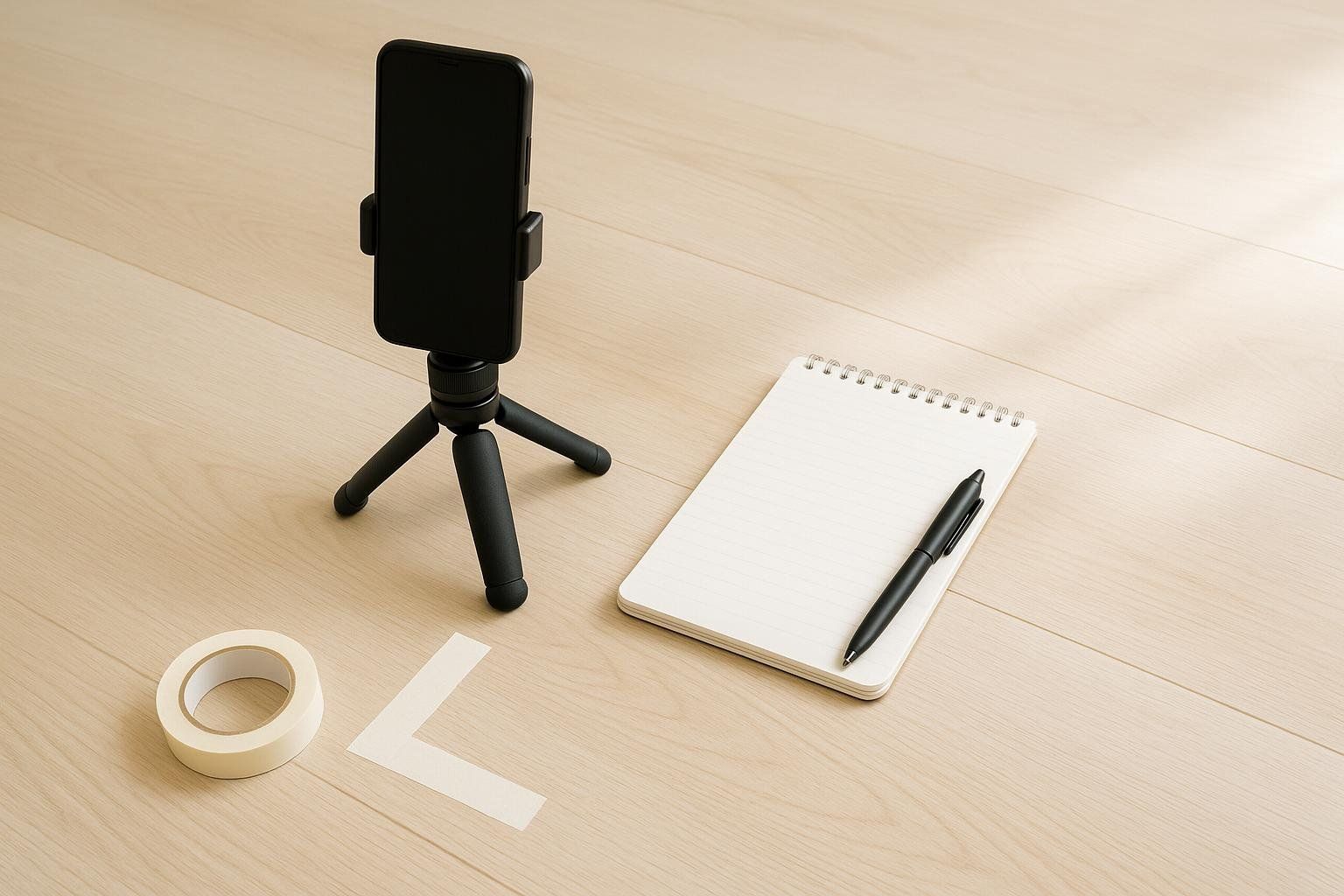
- Lighting: Stand two feet from a north-facing window or use the same ring light each shot.
- Angles: Re-create the exact pose—mark foot placement with tape.
- Settings: Disable beauty filters; use a 3-second timer to eliminate shake.
- Frequency: Snap baseline, then every two weeks (acne) or weekly (pain / mobility).
- Organize: Rename files
YYYY-MM-DD_topic.jpgfor quick side-by-side comparisons.
Evidence Check – What the Research Says
| Outcome | Representative Source | Key Finding |
|---|---|---|
| Scar & wrinkle reduction | LED-mask study cited in Couturaud 2023 (n = 20) | 15–30 % crow’s-feet wrinkle-depth reduction over 12 weeks |
| Joint pain (knee OA) | Systematic review & network meta-analysis, Lasers Med Sci 2024 (11 RCTs) (PubMed 39193110) | SMD −1.41 in VAS pain vs. placebo at 8 weeks |
| Collagen density | Herrera 2024 pilot | Pro-collagen I doubled; ≈ 11 % rise in dermal density |
| Acne inflammation | Papageorgiou 2000 RCT (n = 107) (PubMed 10809858) | 76 % mean reduction in inflammatory lesions after 12 weeks of combined red/blue LED |
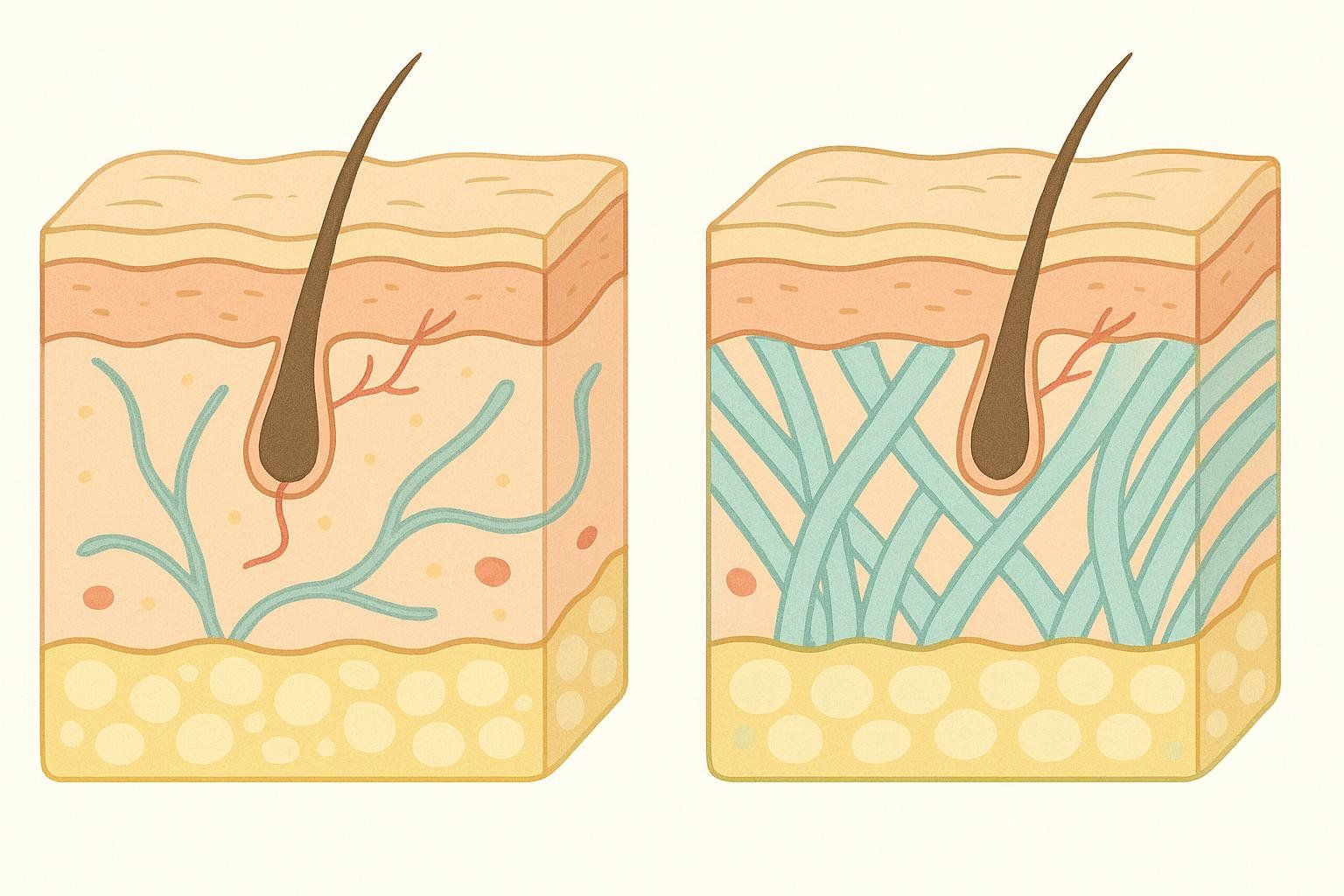
Many findings come from small or single-arm studies; larger randomized trials are underway.
Safety & Side-Effects
Red light emits non-ionizing photons—no DNA damage like UV rays. Reported issues are mild and rare: transient redness, dryness, or eye strain if goggles are skipped (Cleveland Clinic).
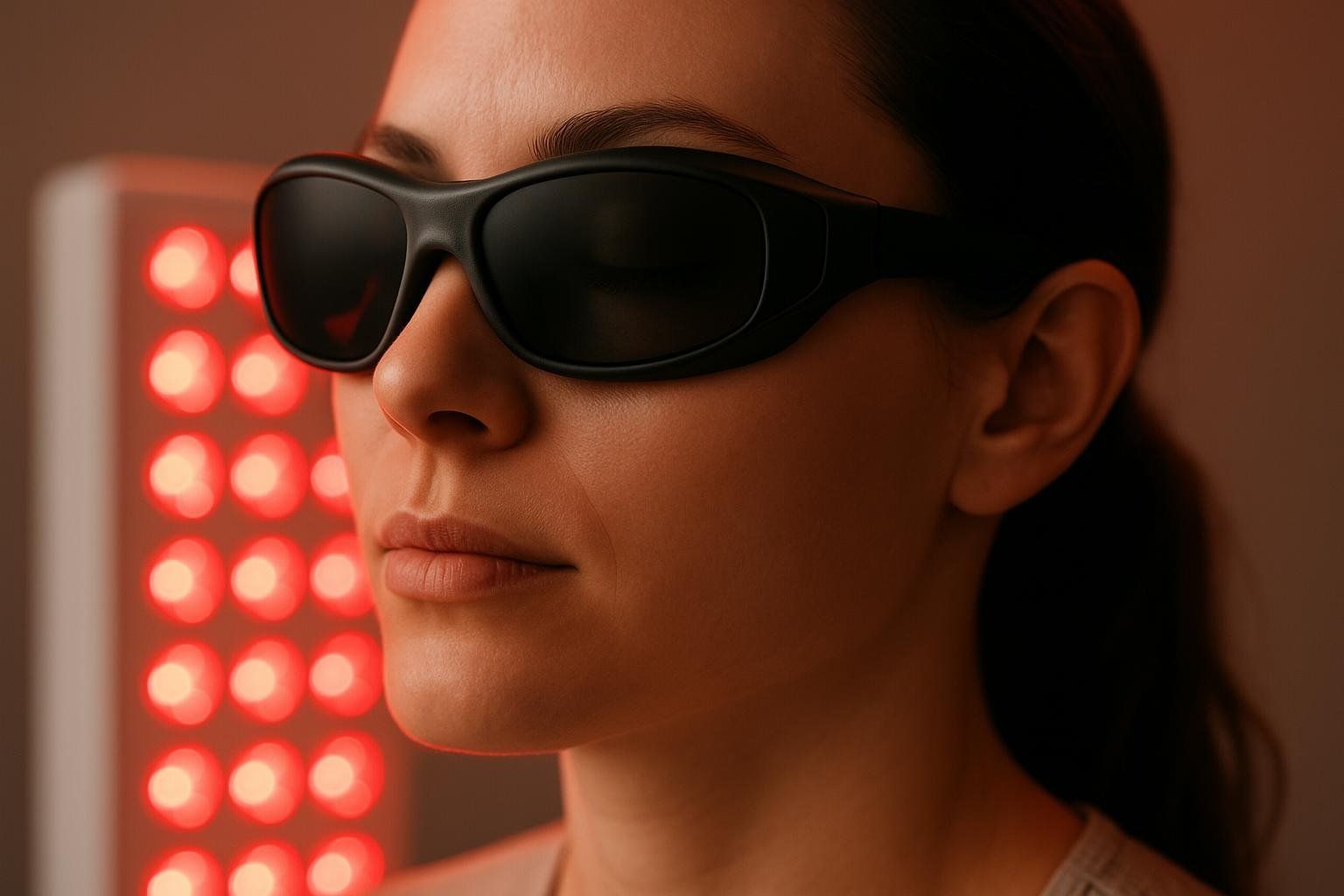
Avoid RLT over:
- Active skin infections or open lesions
- Areas treated with photosensitizing medications
- Pregnant abdomen (lack of safety data)
Home Device vs. In-Studio Panel
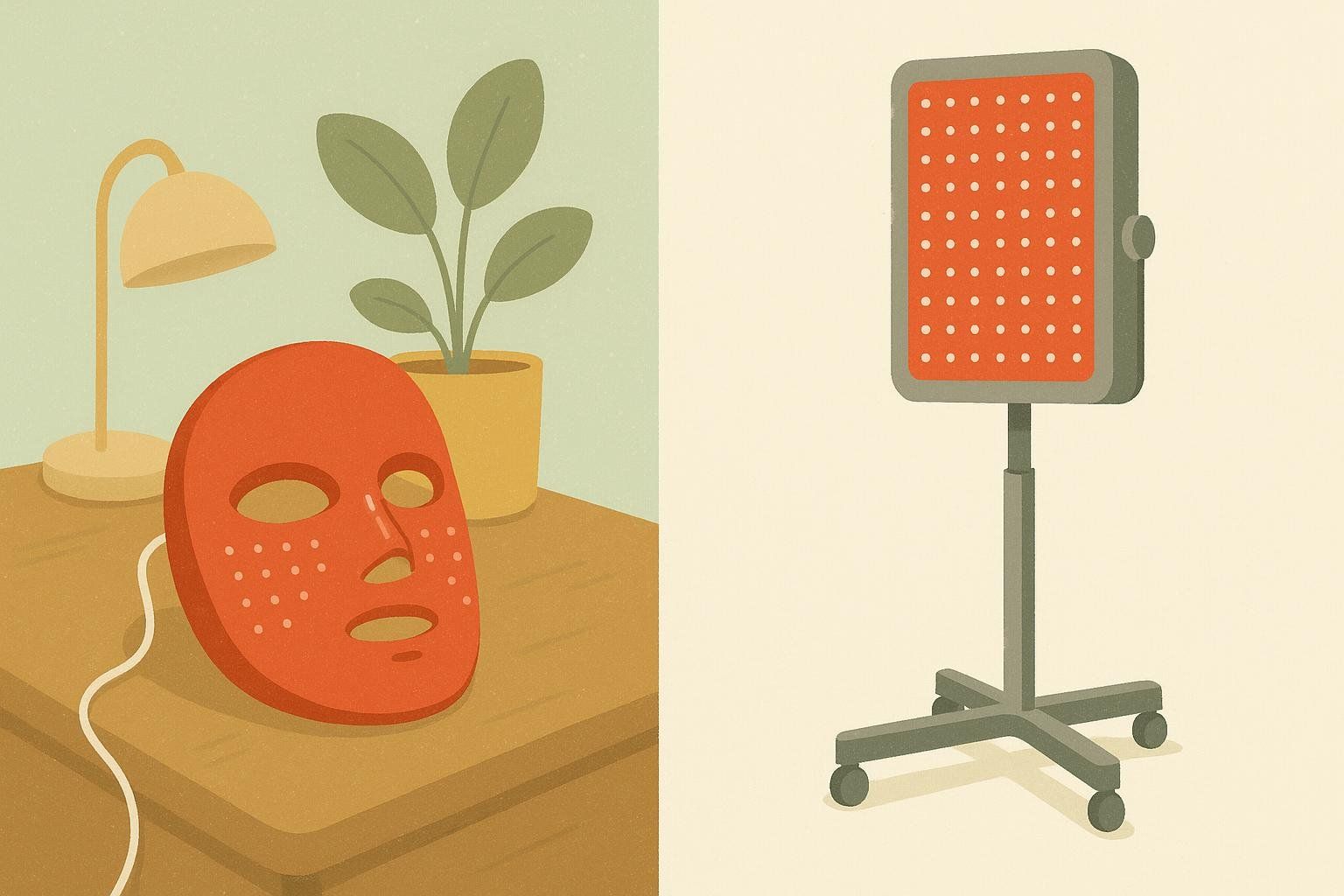
| Feature | Home Mask ($) | Mid-Size Panel ($$) | Full-Body Bed ($$$) |
|---|---|---|---|
| Coverage | Face only | Spot / regional | Head-to-toe |
| Power Density | 5–20 mW/cm² | 20–60 mW/cm² | 30–70 mW/cm² |
| Session Time | 10–15 min | 10–20 min | 10 min |
| Convenience | High | Medium | Low |
| Typical Cost / Session* | N/A (one-time $150–400) | $25–40 | $50–75 |
*Pricing varies by metro area and studio membership packages.
If you crave fastest results, stack shorter daily sessions at home with a weekly high-power studio visit. Wellness centers listed in our Find Red Light Therapy Near You guide offer intro packages.
FAQ
How long does it take for red light therapy to see results?
Clinical trials and user reports converge around the 4- to 8-week mark for visible skin changes and the 2- to 4-week window for modest pain relief. Factors like device power, treatment frequency, and lifestyle (sleep, nutrition) can accelerate or delay outcomes.
Is 10 minutes of red light therapy enough?
For the face or a small joint, 10 minutes at 20–60 mW/cm² often delivers a therapeutic dose (about 6–36 J/cm²). Larger body zones—or lower-power masks—may need 15–20 minutes to reach the same energy threshold. Think of 10 minutes as the minimum effective dose, not a hard rule.
What is the average cost of a red light therapy session?
U.S. wellness studios charge $25–40 for a 20-minute panel session and $50–75 for a full-body bed. Membership bundles can drop per-visit cost below $20. Home devices range from $150–400 for masks to $600–2,000+ for high-power panels.
Does red light tighten skin before and after?
Yes—multiple studies link red and near-infrared wavelengths with increased collagen synthesis, elastin remodeling, and improved micro-circulation. These changes translate to measurably tighter, plumper skin over 8–12 weeks, confirmed by ultrasound and high-resolution photography (Herrera 2024).
Can red light help with fat loss?
Current evidence is weak. Use DEXA scans to objectively monitor any shift.
Does it hurt?
No—units produce gentle warmth at most.
Track Results Beyond Photos
Images inspire, but hard numbers drive progress. A BodySpec DEXA scan quantifies lean mass, fat mass, and even visceral fat—metrics that inflammation-reducing therapies like RLT can influence over months.
Ready to capture your own “after” story? Schedule a DEXA scan and level-up your data-driven wellness journey.
Key Takeaway: Consistency, a well-matched protocol, and objective tracking add up to red-light results you can truly see—and measure. Stick with it, protect those eyes, and trust in the therapy’s proven cellular benefits.

